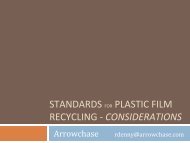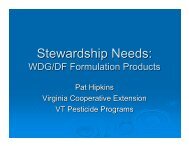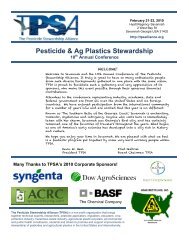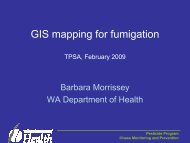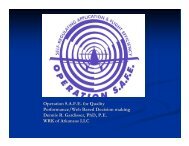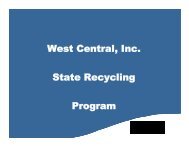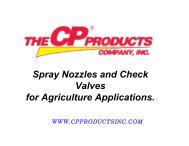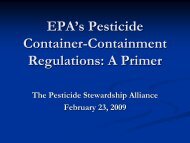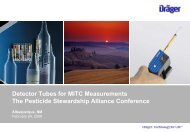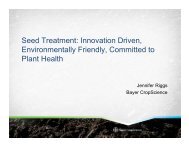Clean Sweep Programs - US Environmental Protection Agency
Clean Sweep Programs - US Environmental Protection Agency
Clean Sweep Programs - US Environmental Protection Agency
- No tags were found...
You also want an ePaper? Increase the reach of your titles
YUMPU automatically turns print PDFs into web optimized ePapers that Google loves.
Section 4 Challenges and OpportunitiesStates and counties have encountered anumber of obstacles in their efforts to conduct andimprove <strong>Clean</strong> <strong>Sweep</strong> programs. The challengesfaced by <strong>Clean</strong> <strong>Sweep</strong> program managers includeobtaining funding, complying with the hazardouswaste regulations and related concerns aboutliability, making potential participants aware of theprograms, overcoming a general distrust ofgovernment programs, and managing problematicwaste streams such as dioxin-containing waste. Asstates are trying to increase participation in theirprograms, they are also working to prevent thebuild-up of unwanted pesticide stocks in the future.Lack of funding is the principal reason notedby states for not operating a continuous <strong>Clean</strong><strong>Sweep</strong> program. Without a permanent fundingmechanism, the scramble for funds requires staffwho are imaginative, persistent, and able to engagepartners. Often, success in fund-raising hinges onhow good of a salesperson the <strong>Clean</strong> <strong>Sweep</strong>manager is, and how readily he or she can solicitpartners and in-kind contributions. The differentways states have used to fund <strong>Clean</strong> <strong>Sweep</strong>programs are discussed in detail in section 2.2.4.1 How do states design their <strong>Clean</strong><strong>Sweep</strong> programs to comply withthe regulatory requirements?The federal hazardous waste regulationsdeveloped under the authority of the ResourceConservation and Recovery Act (RCRA) areextensive, and states may perceive some sections ofthem as a hindrance to collection campaigns forcommonly-generated wastes such as pesticides.Household hazardous waste is exempt fromregulation as hazardous waste, but agriculturalpesticides are not exempt. The Universal WasteRule, discussed below, was specifically designed byEPA to ease some of these regulatory burdens andtherefore encourage collection.As an example of the implications of thehazardous waste regulations, consider the requirementsfor hazardous waste generators, the peoplewho first create or produce that waste. First,generators are responsible for identifying whethertheir solid waste is hazardous waste. If it ishazardous waste, generators are required to registerwith EPA to obtain a generator number. Whengenerators transport or ship waste, they must ensurethat the waste is accompanied by a manifest to thefinal disposal facility.States have addressed the manifestrequirement in several different ways. In Washington,<strong>Clean</strong> <strong>Sweep</strong> participants must comply with thefull RCRA regulations. Participants register beforethe collection events and provide a form listing theirunwanted pesticides. The state government returnsthe approved form to the participants, who use themas manifests for transporting the waste to thecollection site. Some states consider the pesticidesto be pesticide products under FIFRA, the federalpesticide law, until the participant brings it to thecollection site. During the transportation, thematerial is a pesticide, not a waste, so it does notneed to be manifested. At the collection site, thepesticides are determined to be discarded andtherefore become wastes. Many other states haveadopted the Universal Waste Rule (UWR), whichoffers an alternative regulatory structure for materialsdefined as universal wastes. The UWR facilitatesthe collection of hazardous waste pesticides byremoving some of the legal obligations, such as thehandling and paperwork associated with generationand transportation of hazardous waste and theassociated costs.48



